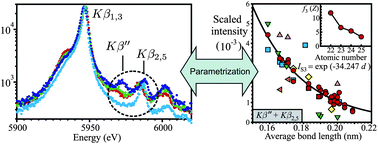Parametrization of Kβ′′ and Kβ2,5 X-ray contributions in Kβspectra of 3d transition metal compounds
Abstract
Large database of high resolution Kβ X-ray

* Corresponding authors
a
Rudjer Bošković Institute, Bijenička cesta 54, Zagreb, Croatia
E-mail:
sfazinic@irb.hr
b Physics Department, University of Rijeka, Omladinska 14, Rijeka, Croatia
c Jožef Stefan Institute, Jamova 39, Ljubljana, Slovenia
Large database of high resolution Kβ X-ray

 Please wait while we load your content...
Something went wrong. Try again?
Please wait while we load your content...
Something went wrong. Try again?
S. Fazinić, L. Mandić, M. Kavčič and I. Božičević, J. Anal. At. Spectrom., 2011, 26, 2467 DOI: 10.1039/C1JA10176E
To request permission to reproduce material from this article, please go to the Copyright Clearance Center request page.
If you are an author contributing to an RSC publication, you do not need to request permission provided correct acknowledgement is given.
If you are the author of this article, you do not need to request permission to reproduce figures and diagrams provided correct acknowledgement is given. If you want to reproduce the whole article in a third-party publication (excluding your thesis/dissertation for which permission is not required) please go to the Copyright Clearance Center request page.
Read more about how to correctly acknowledge RSC content.
 Fetching data from CrossRef.
Fetching data from CrossRef.
This may take some time to load.
Loading related content
